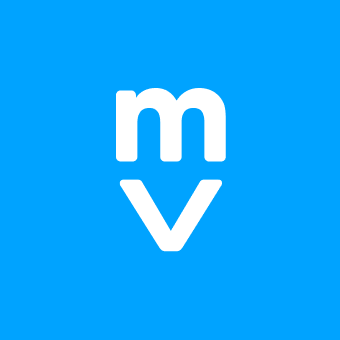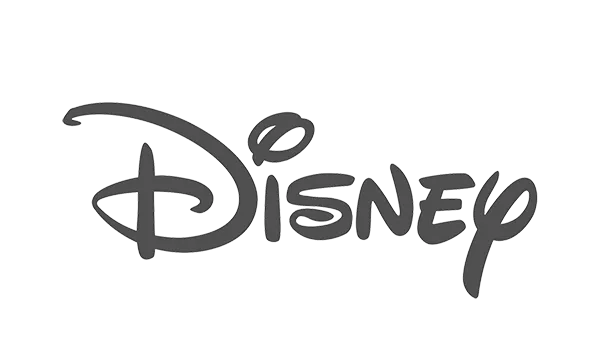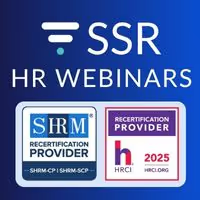It’s evident that companies large and small are digitalizing their applicant lifecycle with applicant tracking systems (ATS) to save resources and improve TAs’ efficiency. According to recent statistics, 70% of large organizations have reported using applicant tracking software, and 94% agree that this platform has had a positive impact on their hiring processes. But what exactly does an ATS mean? How can it help improve your recruitment? Let’s find it all out in this article: ATS definition, how it works, and its purpose within HR and recruitment.
What is an ATS?
An applicant tracking system is a recruitment tool that sources, manages, processes, and catalogs data on job applicants for talent acquisition. Top ATS features include job posting, applicant tracking, resume parsing, team collaboration, career site builder, new hire onboarding, candidate relationship management (CRM), integrations, and recruitment analytics and reporting.
Companies that use a good ATS can experience numerous benefits, from improved recruiter efficiency to more positive candidate experiences and better hiring decisions.
- Data-Driven Hiring: Hiring managers can base their decisions on various data points such as hiring analytics, performance metrics, channel effectiveness, diversity recruitment statistics, and predictive insights, rather than just gut feelings.
- TA Efficiency: Automating tasks like job postings, creating job descriptions, parsing resumes, and scheduling interviews frees up recruiters to focus on strategic tasks, such as enhancing processes and boosting employee engagement.
- Positive Candidate Experience: The ATS does so through timely, personalized communication, branded career sites, and a seamless application process.
- Cost-Effective Hiring: ATS offers a cheaper alternative than employing external recruiters to handle repetitive, low-value recruiting tasks.
- Simplified Compliance: Most ATS are designed to comply with recruitment laws of where their customers are hiring.
- Quality Hires: Broad job board integrations and support for diversity hiring expand the talent pool, while artificial intelligence (AI) analytics and collaborative hiring play an important role in eliminating recruitment bias.

How Applicant Tracking Systems Work
An ATS centralizes every step of the recruitment process, from posting a job to onboarding a new employee, into one platform. It automates repetitive tasks like resume screening and interview scheduling, helps recruiters track and rank candidates, and enables team collaboration through shared workflows and feedback tools. The result, thus, is a faster, more organized, and more consistent hiring experience.
1. Job Posting and Distribution
With just a few clicks, an ATS can help you craft SEO-friendly job postings and publish them to job boards, social media channels, and the company’s careers page. Some platforms also support internal mobility and referral program distribution.
2. Application Collection and Resume Parsing
With an ATS in place, all applicant information is stored in a searchable database. It uses AI to parse resumes, extract key candidate information, and standardize it into structured profiles.
3. Automated Screening and Ranking
Employers can also set eligibility criteria for each role to auto-reject unqualified applications. Many systems assign scores or rankings to candidates based on how well they match the job description.
4. Candidate Management and Collaboration
Depending on your recruitment needs, an ATS can enable collaboration among users, between employers and candidates, and even allow guest access. For example, TAs can track candidates through pipeline stages, tag profiles, and collaborate with others by adding comments or assigning tasks. Meanwhile, guest users, for example, staffing partners, can access certain info without having to have an account on the platform.
5. Communication and Interview Scheduling
The applicant tracking software automates candidate communication by sending application updates, interview invites, and reminders. Most platforms nowadays offer native integrations with interview scheduling tools for easy scheduling.
6. Feedback and Decision-Making
Interviewers can submit structured feedback directly within the platform. Interview scorecards and evaluations are blended into one hub eases the work for hiring managers to make informed decisions.
7. Onboarding and Preboarding
Some ATS platforms extend into new employee onboarding, allowing recruiters to send offer letters, gather documents, and deliver welcome materials before the new hire’s start date. A few can also be programmed to send follow-up emails and materials to the new employee before their first day, a practice known as preboarding.

Key Features and Capabilities
After testing hundreds of ATS platforms, we identified key features essential for effective recruiting are automation and workflow management, communication and candidate engagement, collaboration and feedback tools, customization and integration, compliance and security, reporting and analytics, career pages, mobility, and referrals.
1. Automation & Workflow Management
Modern ATS platforms reduce manual workload by automating repetitive tasks:
- Automated resume screening to filter candidates based on job-specific criteria
- Trigger-based workflows for sending emails, updating statuses, or advancing candidates
- Custom workflow configurations to adapt to your organization’s hiring stages
- AI-based candidate scoring and ranking for faster shortlisting
2. Candidate Communication & Engagement
Effective communications are key for a positive candidate experience, and ATS systems manage to do so by offering:
- Automated emails and email templates for confirmations, rejections, and interview invites
- Interview scheduling tools that sync with Google or Outlook calendars
- Status updates and notifications to keep candidates informed
- Two-way messaging or SMS capabilities on some platforms
3. Collaboration & Feedback Tools
A strong ATS enables hiring teams to work together easily:
- Shared pipelines, notes, and scorecards for evaluating candidates in one place
- Role-based access control for external recruiters or hiring managers
- Real-time feedback to reduce delays in decision-making
- Guest access to streamline input without adding full user seats
4. Customization & Integration
To work effectively across different teams and tech stacks, leading ATS platforms offer:
- Customizable dashboards and workflows tailored to different hiring needs
- ATS integrations with HRIS, payroll, onboarding, background checks, and assessment tools
- Open APIs for custom extensions or middleware connections
5. Compliance & Security
Especially for enterprise or regulated industries, compliance is non-negotiable:
- EEOC and OFCCP data tracking built into application forms
- GDPR-compliant data handling for international candidates
- Audit logs and documentation tracking
- Role-based permissions and SSO support for secure access
6. Reporting & Analytics
Visibility into your hiring pipeline is key for continuous improvement:
- Funnel metrics (e.g., time-to-hire, source of hire, conversion rates)
- Diversity and compliance reporting
- Custom report builders and dashboards for tracking what matters most
7. Career Pages, Mobility, and Referrals
ATS platforms also help amplify your employer brand and internal mobility:
- Branded, multilingual careers pages with a mobile-friendly design
- Internal job board and employee referral tools to tap into your existing team
- SEO optimization for job listings to improve visibility

Benefits of an ATS
An applicant tracking system creates value not only for recruiters and talent managers but also for candidates navigating the job application process. Here's a breakdown of how an ATS benefits each group.
For Employers and Recruiters
A modern ATS helps organizations move faster, hire smarter, and stay compliant, especially as hiring scales or becomes more complex.
- Efficiency Through Automation: ATS platforms automate time-consuming tasks like job posting, resume screening, interview scheduling, and email follow-ups. This frees up TA teams to focus on strategy and candidate engagement. In fact, research shows that an effective ATS can reduce time-to-hire by up to 60%.
- Data-Driven Hiring Decisions: With centralized analytics, hiring managers can make decisions based on metrics rather than gut instinct. Most ATS tools support structured scorecards, source tracking, and pipeline analytics to improve hiring outcomes.
- Collaboration and Visibility: From shared candidate notes to real-time status tracking, an ATS enhances teamwork across recruiters, hiring managers, and even external stakeholders. Everyone involved can see where candidates are in the funnel and leave feedback in one place.
- Compliance and Standardization: Many ATS platforms offer built-in compliance tools, such as EEOC/OFCCP data capture and audit logs. Standardized workflows also reduce bias and ensure consistent hiring practices across teams and locations.
- Improved Employer Branding and Reach: With branded career pages, mobile-optimized application flows, and job board integrations, an ATS makes it easier to showcase your brand and reach top talent wherever they are.
- Cost Savings: By reducing the need for manual processes and external recruiting support, an ATS helps lower your overall cost-per-hire, especially when managing high volumes of applicants.
- Support for Onboarding: Some ATS platforms extend into preboarding, offering document collection, digital offer letters, and day-one prep tools to help new hires hit the ground running.
For Candidates
While applicant tracking systems are designed to streamline hiring for employers, the best platforms also enhance the candidate experience in tangible ways. From easier applications to fairer evaluations and better communication, a well-implemented ATS can make the job search feel smoother, faster, and more transparent.
- Easier Applications: Features like one-click application, LinkedIn profile uploads, and mobile-friendly interfaces make the application process faster and less frustrating.
- Transparent Communication and Status Updates: ATS platforms can send automated status updates, interview invites, and reminders. Some also offer candidate portals where job seekers can check their application progress.
- Fairer, More Equitable Screening: These platforms can help reduce subconscious bias by supporting more standardized and anonymized applicant assessments. Depending on configuration, ATS software can remove personal details from resumes during early screening, use structured scorecards and interview rubrics to ensure candidates are assessed consistently, and track diversity metrics to support accessible and inclusive hiring.
- Streamlined Onboarding: For those who receive an offer, many ATS platforms offer preboarding features, such as welcome emails, digital paperwork, and resource sharing, which help new hires feel supported from day one.
Common Myths and Misconceptions About ATS
Despite how widely used applicant tracking systems have become, plenty of confusion still surrounds how they actually work. Below, we address some of the most common myths and set the record straight.
Myth 1: ATS automatically rejects resumes that aren’t in plain text.
Fact: Modern ATS platforms are capable of parsing most cleanly formatted resumes in common file types like .docx and PDF. There’s no need to strip your resume down to plain text, as long as you avoid tables, columns, or embedded images, a standard, professional layout will work just fine.
Myth 2: All ATS platforms work the same way.
Fact: There’s no universal standard. Some AI ATS use ranking algorithms, while others operate more like filing systems. Parsing accuracy and file compatibility can also vary. Understanding the specific platform in use (as a recruiter or applicant) helps set realistic expectations.
Myth 3: The ATS makes the final hiring decision.
Fact: ATS tools are designed to assist recruiters, not replace them. Even when filters or keyword-based screening are used, qualified candidate resumes that make it through still go through human review before hiring decisions are made.
Myth 4: Only large enterprises benefit from using an ATS.
Fact: ATS platforms aren’t just for Fortune 500 companies. Many vendors now offer entry-level ATS for small businesses and startups, helping them reduce manual admin, improve compliance, and hire more efficiently without a large HR team.
Myth 5: Keyword stuffing improves your chances.
Fact: ATS tools don’t just count how often keywords appear; they evaluate context. Keyword stuffing can actually backfire by making your resume look unnatural or unreadable to recruiters. A better approach is to tailor your resume to each job using relevant language from the description.
Myth 6: ATS tools ensure the best candidate matching.
Fact: While ATS platforms help identify strong matches based on job criteria, they can overlook transferable skills or nuanced experiences that a human reviewer would recognize. That’s why structured interviews, human review, and collaborative scoring remain essential parts of the hiring process.
How an ATS Compares to Other Recruiting Software
While an applicant tracking system is the backbone of most hiring workflows, it's not the only type of software used in recruitment. To fully understand what an ATS does—and what it doesn’t do—it helps to compare it to related tools, such as recruiting CRM, HRIS (Human Resources Information System), HRMS (Human Resources Management System), and VMS (Vendor Management System).
What Makes an ATS Unique?
An ATS is designed to manage the active hiring process, from posting a job to making a hire. It centralizes candidate data, automates resume screening and interview scheduling, supports team collaboration, and ensures compliance with hiring regulations.
By contrast, other recruiting and HR tools serve different stages or types of work. Here’s how they compare.
ATS vs. Other Recruiting and HR Software
When to Use Each System (and How They Work Together)
- Use an ATS if your goal is to centralize candidate tracking, streamline hiring workflows, and enable recruiter collaboration.
- Use a recruiting CRM if you want to build a talent pipeline before jobs open—especially useful for recurring roles or hard-to-fill positions.
- Use both ATS + CRM to cover the full candidate journey: CRM for sourcing and nurturing, ATS for selection and hiring.
- Use an HRIS or HRMS post-hire to manage employee data, onboarding, payroll, and compliance.
- Use a VMS if you're managing a high volume of temporary or external workers and need contract oversight.
Read More: ATS vs CRM: What’s the Difference and Do You Really Need Both?
How ATS Has Evolved
Applicant tracking systems originated in the early 1970s to help organize resumes and applicant data. Over the decades, this recruitment software has evolved from simple filing systems into sophisticated cloud-based platforms, enhancing job application screening and hiring processes.
Today’s ATS tools incorporate AI to efficiently craft job posts, analyze resumes, and search for potential applicants. They also offer features like automated interview scheduling and hiring chatbots, which help streamline communication, enhance the candidate experience, and free up recruitment teams from repetitive tasks.
How Much Does an ATS Cost?
ATS pricing can be as little as $0 and as much as $125,000 per year, depending on your organization’s size, hiring needs, and feature requirements. While some vendors offer free plans for startups, others deliver enterprise-grade functionality with custom pricing. Here’s a breakdown to help you understand what you’re likely to pay and what you’ll get at each price point.
Note: Some vendors use annual contracts; costs may vary based on the number of users, open positions, or features selected.
When Buying an ATS Makes Sense
If you're wondering whether a small business needs an ATS, a good rule of thumb is that you have at least 20 job openings annually. Some other indicators that it might be time to invest in an ATS include:
- When you’re making multiple hires every month or every week, each requires advertising in different channels, writing job postings for each vacancy, and screening dozens of resumes from which your HR team has to schedule multiple interviews with various hiring managers.
- When you miss an application and lose out on a great candidate.
- When your applicants wait so long for news of their application that they accept an offer from your competitor.
- When your team struggles to keep up with the influx of applications, and ends up making sub-par hires just to get vacancies filled.
When Buying an ATS Doesn’t Make Sense
What an ATS won’t (and can’t) do is prevent employees from leaving. So, if you have a hiring capacity problem, you must ask yourself this: Is your team growing, or are you churning employees?
If you’re constantly hiring but your overall headcount remains the same, your priority should be to invest in tools that promote employee experience and boost retention.
On another note, an ATS takes care of your hiring funnel, but if that’s the end of the road for your tech stack, you can do better. ATS and HRIS (Human Resources Information System) software work in tandem. For optimal human capital management, candidates who are hired through an ATS should enter into your HRIS either natively or via an HRIS integration. So, if you don’t have an HRIS or HRMS (Human Resources Management System), you’re better off looking at a comprehensive (hire-to-retire) HR software solution than a dedicated ATS.
You DO Need An ATS. What Now?
As Shirley Borg, Head of HR at Energy Casino, shared with SSR, “Test the system as much as possible before making a purchase. It's a costly mistake to buy unfitting software…” To find the right ATS solution, we recommend using this 5-step decision-making process:
- Identify Your Organization's Needs. Start by assessing your TA team’s requirements and pain points. Consider factors such as company size, hiring volume, collaboration needs, and integration requirements.
- Research and Compare ATS Providers. You’re spoilt for choice in this software landscape. You can narrow down your search by looking at each vendor’s specialty. Once you’ve identified the ATS vendor that can work for your company…
- Test The Tools from Different Perspectives. Set up demos and trials from your shortlisted ATS providers to get hands-on experience with their platforms. Involve TA, HR, and IT teams and evaluate tools from a candidate's perspective. This ensures a comprehensive understanding of their capabilities and suitability.
- Consider Scalability and Integration. It is best to choose an ATS that can scale with your organization's growth in terms of hiring needs and the number of users on your hiring team. Additionally, ensure that your ATS integrates seamlessly with your existing HR software to minimize disruptions to your overall HR processes.
- Evaluate Customer Support. If you ask an ATS vendor, they’ll likely say they offer amazing support. To get an impartial opinion, look for user reviews or speak to existing and past customers. If they’ve moved on to a different applicant tracking software, find out why.

Don’t have the time and resources to DIY all these steps? Our HR Tech experts can help out—for free!
The Future of ATS
As the hiring landscape becomes more competitive and technology-driven, applicant tracking systems are evolving to meet new demands. The next generation of ATS platforms will be defined by smarter automation, better user experiences, and a deeper commitment to fairness and inclusion. Here's what to expect.
Smarter Automation and Predictive Hiring
AI and machine learning are driving significant improvements in how ATS platforms assist employers in evaluating candidates. Particularly, these advancements will enable these systems to perform skills-based screening, learn from past hiring patterns to improve their job-candidate matching recommendations, and automate repetitive, low-value tasks.
Enhanced User Experience
Future ATS platforms will prioritize usability for both recruiters and candidates. Improvements will include recruiting chatbots and live support that guide applicants through the process in real-time, a mobile-first design that supports applying, reviewing, and managing candidates on the go, and self-service scheduling that allows candidates to choose interview times directly.
Stronger Focus on Fairness and Inclusion
Diversity, equity, and inclusion (DEI) are becoming foundational in hiring, and ATS tools are adapting accordingly. We’re seeing more ATS companies focusing on providing anonymized screening to remove identifying details from resumes, structured evaluations to ensure consistency and reduce unconscious bias, diversity tracking dashboards that measure representation across job stages, as well as built-in compliance tools for EEOC, GDPR, and other regulations.
Greater Integration and Emerging Technologies
ATS platforms are increasingly built to integrate with the broader HR tech stack and even explore new technologies. Emerging trends we’re witnessing include deeper integration with HRIS, onboarding, and payroll systems for smoother data flow, social media and sourcing tool integrations for better access to passive talent, gamified assessments to evaluate cognitive and behavioral fit, and cloud-native infrastructure for faster updates, better security, and global access.
FAQs
What does ATS mean?
ATS stands for applicant tracking system. It is designed to assist organizations in sourcing, managing, and processing job applications.
What are some popular ATS systems?
Greenhouse, Pinpoint, and BambooHR are the most popular among midmarket U.S.-based businesses. Manatal and Lever are some top ATS tools for SMBs, while Recruit CRM is a well-known option for staffing agencies.
What is the best applicant tracking system for staffing agencies?
Manatal, Recruit CRM, and Zoho Recruit are some of the best recruitment agency software options that cover applicant tracking features.
What are the best free applicant tracking systems?
Manatal, Zoho Recruit, and Monday.com are our top picks for the best free ATS.
What are the best applicant tracking systems for small businesses?
Besides free platforms like Manatal and Zoho Recruit, Workable and Dover are great ATS choices for SMBs.
What is an ATS resume?
An ATS resume, or ATS-friendly resume, is specifically designed for applicant tracking systems. It involves careful selection of file types and strategic use of keywords to ensure that the software can effectively read, comprehend, and rank the resume during the initial screening process.
Can ATS read PDF files?
Yes, most of them can scan just fine resumes in PDF, .doc, and .docx formats.
Summing Up
Let’s review what we’ve learned:
- ATS is software designed to source, manage, process, and catalog a database of applicants for talent acquisition.
- 70% of large organizations use ATS software, and 94% find it beneficial for hiring.
- Key functions of an applicant tracking system include job posting, resume parsing, and candidate management. Some also offer collaboration, video interviewing, and onboarding features.
- ATS and CRM tools differ in their roles in recruitment: ATS streamlines application logistics and is used in later hiring stages, while CRM builds relationships with potential candidates and is used in early attraction and engagement.
- The benefits of an ATS include data-driven hiring decisions, improved TA efficiency, a positive candidate experience, cost-effective hiring, simplified compliance, and quality recruits.
- ATS evolved from simple filing systems in the 1970s to sophisticated web-based, intelligent platforms today, and it will likely evolve more with the development of AI.
- ATS prices range from free to $125,000 annually, depending on features and support.
- Several positions to fill quickly, missing out on top candidates, or struggling to manage applications are clear signals that you need an ATS in place.
- An ATS can't prevent turnover. Prioritizing employee rewards and recognition tools makes much more sense to enhance employee experience and retention.
- To choose the right ATS, follow a 5-step process—identify recruitment needs, research and compare ATS providers, request demos and trials, and consider scalability, integration, and support—to determine the right ATS to buy. Or, easier, contact our experts for free assistance.






























